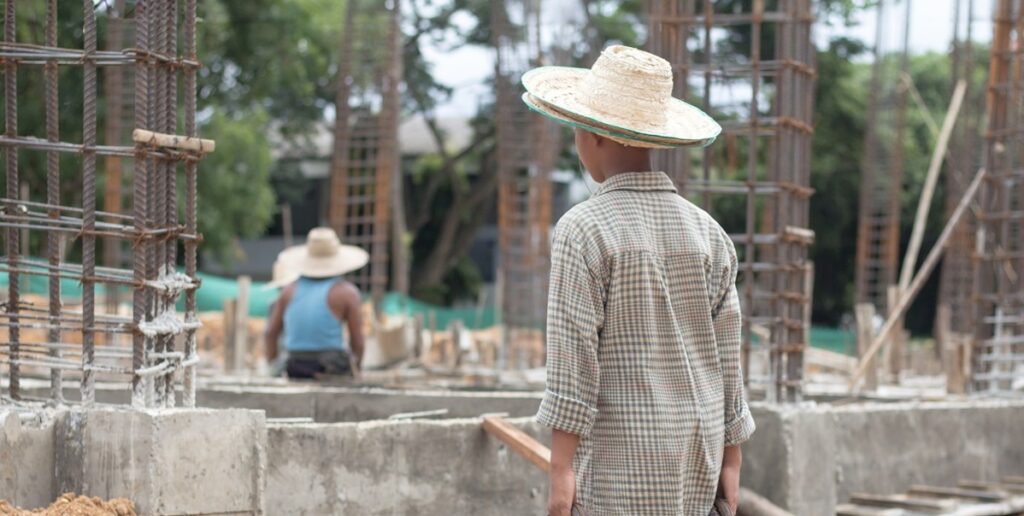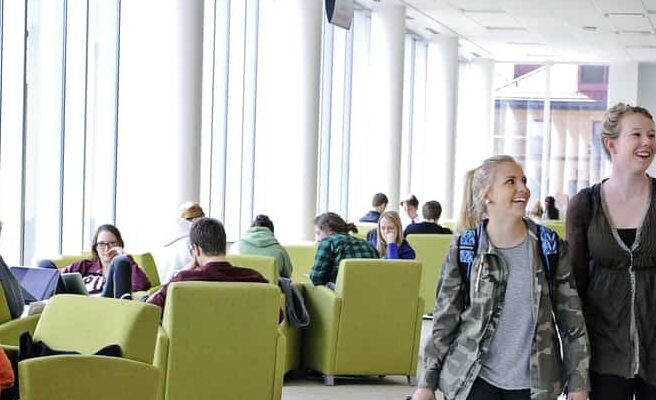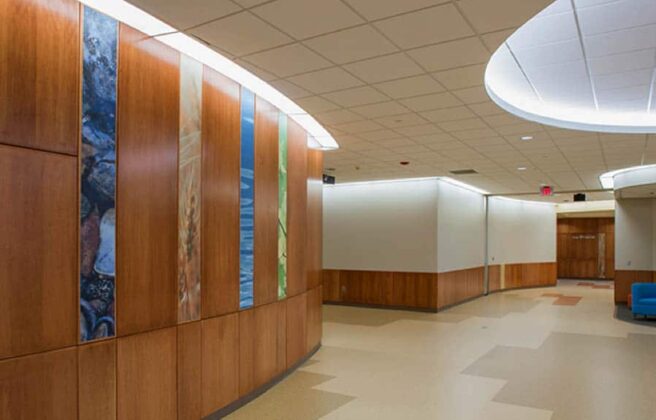May contain sensitive content.
BWBR was thrilled to welcome primary researcher Dung “Joon” Ta for a two-semester internship as part of the University of Minnesota Master of Science in Architecture – Applied Research in Practice (MS-ARP) program. Joon dug deep into the complexities of the issue of modern slavery with the intent of providing usable guidance for design professionals, and the resulting project is a four-step framework to help designers recognize and mitigate the risks of forced labor within the supply chain of specified building materials.
Despite the common belief that slavery belongs to the past, it persists in contemporary society, manifesting in diverse forms. The COVID-19 pandemic, economic shockwaves, widespread job loss, and an upsurge in poverty have left millions of workers worldwide in situations of heightened vulnerability and their fundamental principles and rights at work at greater risk. Modern slavery is a global phenomenon occurring in every country and industry, with 2021 Global Estimates revealing that 50 million people are in situations of modern slavery on any given day, either forced to work against their will or in a marriage that they were forced into.
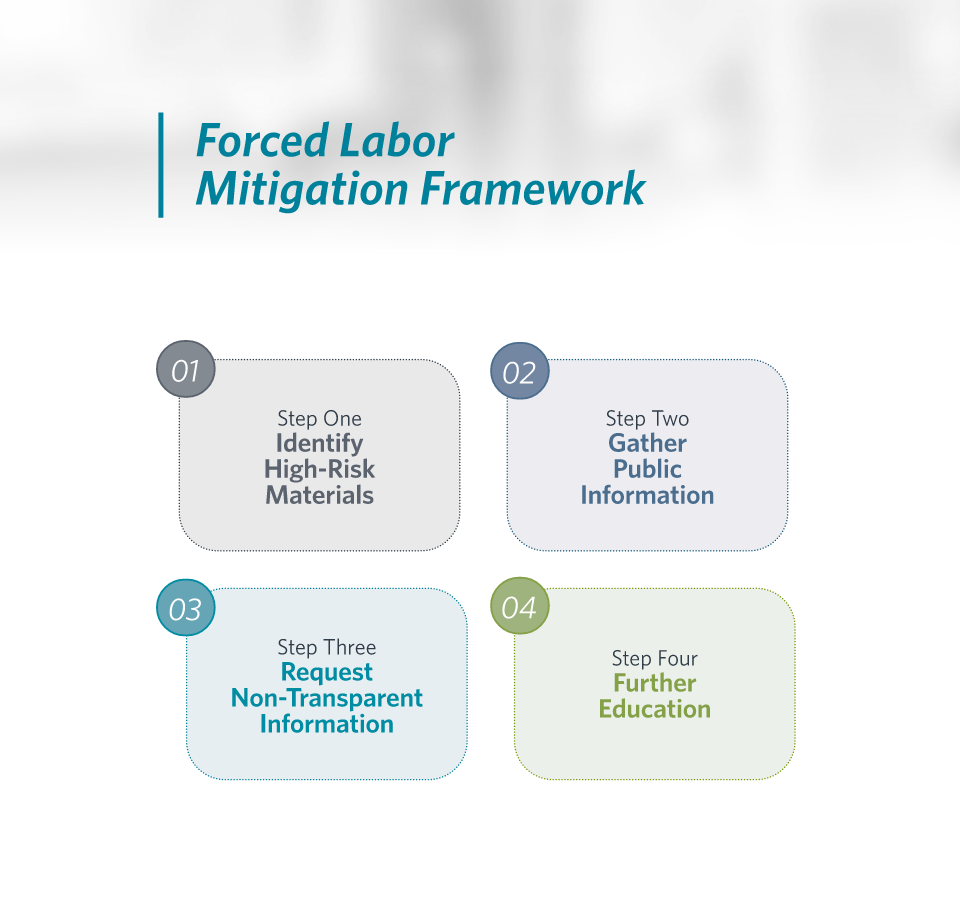
What is Modern Slavery?
Modern slavery covers a set of specific legal concepts including forced labor, concepts linked to forced labor (i.e., debt bondage, slavery and slavery like practices and human trafficking), and forced marriage. Although modern slavery is not defined in law, it is used as an umbrella term that focuses attention on commonalities across these legal concepts. Essentially, it refers to situations of exploitation that a person cannot refuse or leave because of threats, violence, coercion, deception, and/or abuse of power.
Step One: Identify High-Risk Materials
The manufacturing sector accounts for nearly one-fifth of all forced labor exploitation of adults, impacting about 3 million people. Manufacturing involves the transformation of raw materials from agriculture, forestry, fishing, and mining or quarrying, as well as the transformation of other manufacturing products into new products. Most forced labor cases occur in production in the lower tiers of domestic or global supply chains. The below interactive visual helps identify high-risk materials, countries, and applications and end products.
Data visualized from Design for Freedom Toolkit
Step Two: Gather Public Information
Refer to the following table as a guide to find or request documentation from manufacturers that could contain information related to forced labor.
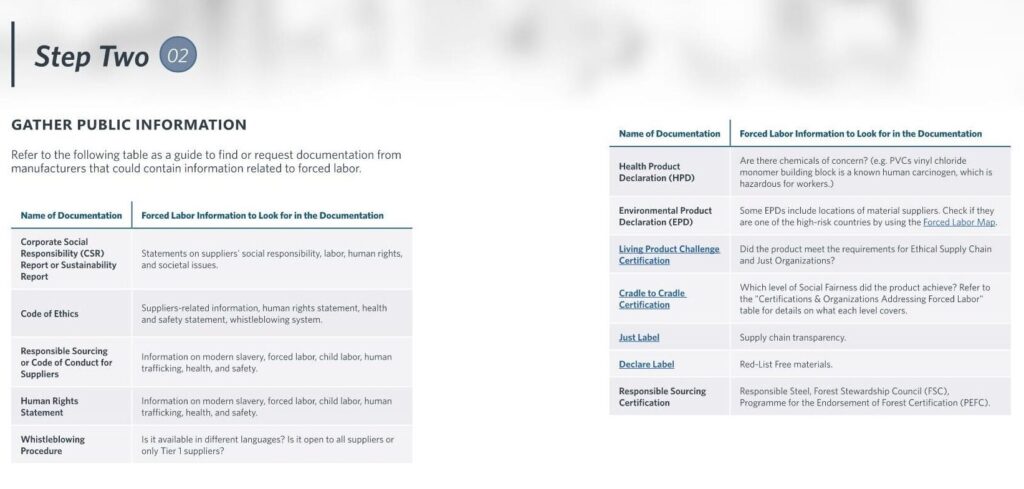
Step Three: Request Non-Transparent Information
Below is an email template with questions to request additional information if necessary.
Dear [Manufacturer],
Our organization has committed to working toward more equitable building material supply chains. We seek material transparency in the products we specify on our projects. Forced labor is a global phenomenon occurring in virtually every country and industry, with the 2021 Global Estimates revealing that 28 million individuals endure such conditions daily. We strive to prioritize products and manufacturers that support human rights and equitable practices. We invite you to be a collaborator in this important work. We appreciate your commitment to this effort.
- Do you have any policies, code of conduct, code of ethics, or statements that address forced labor in the supply chain?
• What grievance and whistle-blowing mechanisms do you have in place for employees? Please describe.
- Please list the country(ies) where your organization manufactures this product.
- Do you have Corporate Social Responsibility (CSR) risk mapping? Please describe.
• Do you have an audit program and/or other due diligence program for your suppliers? If yes, do they only apply to Tier 1 suppliers or all suppliers involved in the supply chain?
• Do you monitor suppliers’ compliance?
Step Four: Further Education
Below are some additional resources for further education:
Conclusion
There exists a pressing need to expand knowledge on modern slavery impacts. The hope is that this research helps to raise awareness of the issue, proposing a framework and offering resources as an advocacy tool to empower design professionals in recognizing and mitigating the risk of forced labor within the supply chains of specified building materials.


